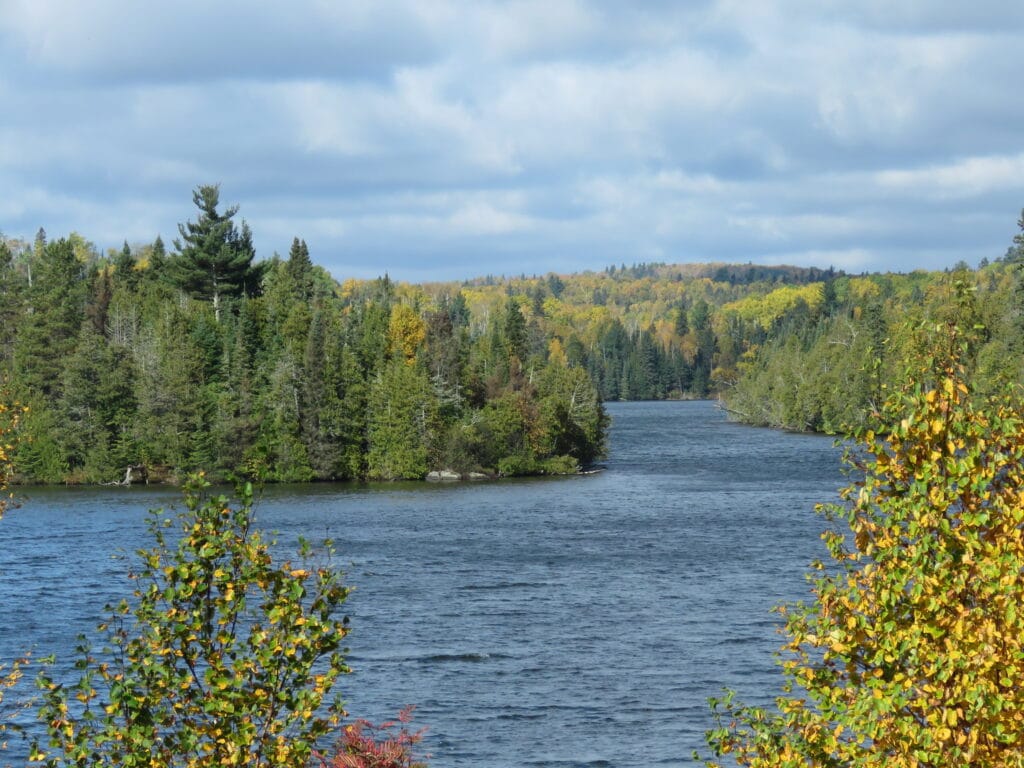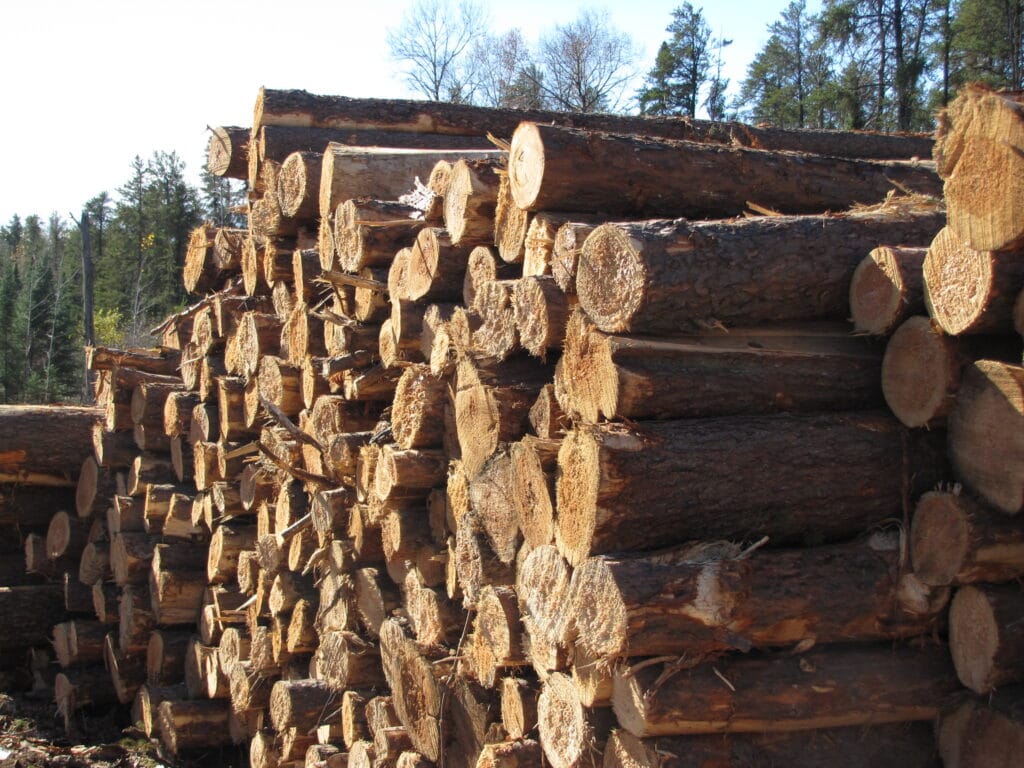
Large swaths of Minnesota’s north woods are owned by the state and currently logged, mined, and managed to help fund public education. These “school trust lands”—about two square miles per township—were transferred from the federal government when Minnesota became a state in 1858. Today, about 1.5 million acres are still owned by the state, with another million acres of mineral rights.
State officials and nonprofit partners are now studying a potential new funding source: leaving the school trust lands alone. These trees and swamps could bring in revenue simply by being allowed to remove carbon from the atmosphere and store it over long periods of time.
Planting and protecting forests has emerged as a key strategy to reduce the effects of climate change.
Last fall, The Nature Conservancy awarded Minnesota-based nonprofit Dovetail Partners $200,000 to analyze the possibilities of carbon storage on the state’s school trust lands. The carbon storage market has been growing, but including public lands has been a challenge.
“Even though forest carbon offset projects have been around a while, we’re still seeing barriers to adoption for specific landowner groups,” said Kathryn Fernholz, president and CEO of Dovetail Partners. “This project will evaluate carbon project potentials for school trust lands, an important part of our rural land base that has not yet been engaged in these ecosystem market opportunities.”
By managing lands for carbon storage, the state can receive payments from entities that want to offset carbon emissions from industrial sources. And, the lands can offer other benefits: clean water, wildlife habitat, flooding risk reduction, outdoor recreation, and more. While the carbon offsets are a growing industry, it’s a bureaucratic and technical challenge for states to offer their lands on the market.

The new project will help chart a course. Dovetail Partners intends to not only identify up to 60,000 acres of Minnesota school trust lands that could be part of the carbon offset market, but take the model to nine other states with similar land holdings. They hope to pilot the program here, possibly leading the way for similar efforts on 10 million acres in total across the country.
“I recognize the important role Minnesota’s school trust lands can, and will play, in providing ecosystem services benefits like carbon sequestration through improved sustainable forest management practices,” said Aaron M. Vande Linde, Director, Minnesota Office of School Trust Lands. “These types of mitigation strategies are key aspects of our current work as we look for opportunities to demonstrate that school trust lands can produce both economic and environmental benefits.”
The Nature Conservancy reports that natural and working lands (such as managed forests and rangeland) currently reduce the United States’ overall carbon output by more than 10 percent. The organization says numerous natural carbon solutions can help triple the impact, and reduce carbon equal to taking all cars off the roads for a year.
The grant from The Nature Conservancy is part of its Natural Climate Solutions program, which is supported by the Doris Duke Charitable Foundation. The funding is intended to support research and development of climate solutions that protect natural habitat while capturing carbon and reducing greenhouse gas emissions.
“By funding these innovative projects, we hope to expand the use of promising, cost-effective nature-based climate solutions,” said Catherine Macdonald, The Nature Conservancy’s North America Natural Climate Solutions Director. “In addition to their climate benefits, natural climate solutions can improve life and livelihood, by protecting water supplies, improving soil health and productivity, providing wildlife habitat, buffering flood zones, creating healthier communities, and increasing income for private landowners.”
Dovetail Partners will examine the potential positive impacts of “Improved Forest Management.” Minnesota’s school trust lands would probably still be logged, but at potentially longer intervals. Other natural management techniques would also be used to increase carbon sequestration. The organization will work with the Department of Natural Resources, Office of School Trust Lands, University of Minnesota-Duluth, and The Nature Conservancy of Minnesota on the project.
Peatlands and Carbon Storage

While the current study focuses on forest lands, Minnesota’s school trust acres include a significant amount of peatlands, which are also an excellent carbon storage ecosystem. These wetlands are usually very low in oxygen, which prevents leaves and other organic matter from decaying, effectively trapping the carbon they contain.
When peatlands are drained or bulldozed, oxygen increases, decomposition accelerates, and the peat can quickly release large amounts of carbon into the atmosphere. Some trust lands are part of mining operations and proposals, and these activities can create pollution and damage peatlands.
PolyMet and Twin Metals are both poised to destroy significant amounts of wetlands, at more than 1,000 acres each. Their operations are also energy-intensive, with high carbon emissions, potentially worsening global warming on two fronts. The emissions from the mines’ power use, both on-site diesel and off-site coal-powered electric, would equal nearly 50,000 passenger cars driving an average 11,500 miles per year, or the emissions from power consumed by nearly 200,000 homes.
There are also approximately 83,000 acres of state-owned school trust lands in the Boundary Waters Canoe Area Wilderness, where they are not able to generate revenue for the state’s schools. For more than a decade, the state and federal government have been trying to transfer the state lands to the Forest Service, in exchange for lands outside the wilderness — where they could be logged, mined, or sold.
The exchange took its first tangible step in 2018 when nonprofit partner The Conservation Fund purchased 8,000 acres of private forestland, which it plans to trade with the state for its BWCAW inholdings. Then the Forest Service will purchase the inholdings from The Conservation Fund.
With the complicated management of school trust lands, the potential of carbon storage credits could change the playing field once again. An option for more sustainable management of these public lands could help offset greenhouse gas emissions, while also reducing conflicts with other environmental and economic concerns.
More information
- Five Projects Split $860,000 to Further Grow Natural Climate Solutions in U.S. – The Nature Conservancy
- Dovetail Partners awarded grant to grow natural climate solutions in U.S. – Dovetail Partners
- Study: Copper Mining and Climate Change – Friends of the Boundary Waters Wilderness
- Carbon Credits – Minnesota Office of School Trust Lands
- Natural Climate Solutions Accelerator Grant Program – The Nature Conservancy
- Boundary Waters Land Sale & Exchange – Minnesota Office of School Trust Lands

